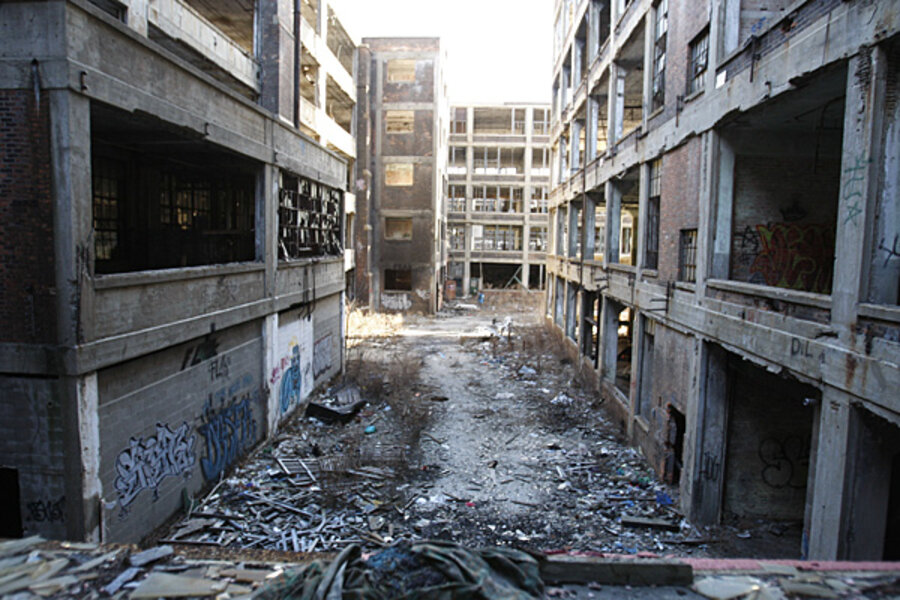Detroit: The bankruptcy of America's social contract
Loading...
One way to view Detroit’s bankruptcy — the largest bankruptcy of any American city — is as a failure of political negotiations over how financial sacrifices should be divided among the city’s creditors, city workers, and municipal retirees — requiring a court to decide instead. It could also be seen as the inevitable culmination of decades of union agreements offering unaffordable pension and health benefits to city workers.
But there’s a more basic story here, and it’s being replicated across America: Americans are segregating by income more than ever before. Forty years ago, most cities (including Detroit) had a mixture of wealthy, middle-class, and poor residents. Now, each income group tends to lives separately, in its own city — with its own tax bases and philanthropies that support, at one extreme, excellent schools, resplendent parks, rapid-response security, efficient transportation, and other first-rate services; or, at the opposite extreme, terrible schools, dilapidated parks, high crime, and third-rate services.
The geo-political divide has become so palpable that being wealthy in America today means not having to come across anyone who isn’t.
Detroit is a devastatingly poor, mostly black, increasingly abandoned island in the midst of a sea of comparative affluence that’s mostly white. Its suburbs are among the richest in the nation. Oakland County, for example, is the fourth wealthiest county in the United States, of counties with a million or more residents. Greater Detroit — which includes the suburbs — is among the nation’s top five financial centers, the top four centers of high-technology employment, and the second-biggest source of engineering and architectural talent. Not everyone is wealthy, to be sure, but the median household in the region earns close to $50,000 a year, and unemployment is no higher than the nation’s average. The median household in Birmingham, Michigan, just across the border that delineates the city of Detroit, earned more than $94,000 last year; in nearby Bloomfield Hills — still within the Detroit metropolitan area — the median was more than $150,000.
The median household income within the city of Detroit is around $26,000, and unemployment is staggeringly high. One out of 3 residents is in poverty; more than half of all children in the city are impoverished. Between 2000 and 2010, Detroit lost a quarter of its population as the middle-class and whites fled to the suburbs. That left it with depressed property values, abandoned neighborhoods, empty buildings, lousy schools, high crime, and a dramatically-shrinking tax base. More than half of its parks have closed in the last five years. Forty percent of its streetlights don’t work.
In other words, much in modern America depends on where you draw boundaries, and who’s inside and who’s outside. Who is included in the social contract? If “Detroit" is defined as the larger metropolitan area that includes its suburbs, “Detroit" has enough money to provide all its residents with adequate if not good public services, without falling into bankruptcy. Politically, it would come down to a question of whether the more affluent areas of this “Detroit" were willing to subsidize the poor inner-city through their tax dollars, and help it rebound. That’s an awkward question that the more affluent areas would probably rather not have to face.
In drawing the relevant boundary to include just the poor inner city, and requiring those within that boundary to take care of their compounded problems by themselves, the whiter and more affluent suburbs are off the hook. “Their" city isn’t in trouble. It’s that other one — called “Detroit."
It’s roughly analogous to a Wall Street bank drawing a boundary around its bad assets, selling them off at a fire-sale price, and writing off the loss. Only here we’re dealing with human beings rather than financial capital. And the upcoming fire sale will likely result in even worse municipal services, lousier schools, and more crime for those left behind in the city of Detroit. In an era of widening inequality, this is how wealthier Americans are quietly writing off the poor.






